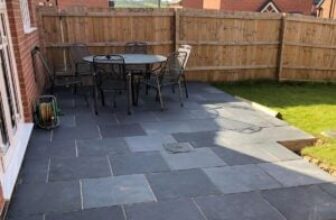
Old carpets often carry a history of family gatherings, spills, and wear from foot traffic. While they may seem ready for replacement, several carpet repair techniques can restore their charm without a hefty price tag. Understanding how to repair worn carpets not only saves money but also helps maintain the comfort and style of a well-loved space. In this guide, we’ll explore various methods to tackle common carpet issues, from patches to deep cleaning, keeping your carpets looking fresh and new for years to come.
Why Choose Carpet Repairs Over Replacement?
Carpet repairs offer an economical alternative to complete carpet replacement, especially when dealing with isolated issues. Fixing only the damaged areas can save both time and money, while also reducing waste. Carpet repair services in Brisbane provide customized solutions for all types of carpets, whether they’re lightly worn or heavily damaged.
Advantages of Carpet Repairs
- Cost-Effective: Repairs can be significantly cheaper than installing new carpet.
- Eco-Friendly: Reduces waste by extending the life of existing carpets.
- Preserves Style: Ideal for unique or custom carpets that might be difficult to replace.
- Fast Turnaround: Repairs generally take less time compared to a full carpet replacement.
Understanding Common Carpet Problems
Before diving into repair techniques, it’s important to identify the type of damage your carpet has. Common issues include:
- Stains and Spills: From wine to pet accidents, stains are common.
- Tears and Rips: Often caused by heavy furniture or wear over time.
- Burn Marks: Cigarette or iron burns can create unsightly holes.
- Wrinkles and Buckling: Caused by loose carpets that weren’t stretched properly.
- Faded or Worn Patches: High-traffic areas can become noticeably faded.
Once you identify the problem, choosing the right repair technique becomes much easier.
Essential Carpet Repair Techniques
Whether you’re a DIY enthusiast or looking for professional help in Melbourne, several techniques can bring your carpet back to life.
1. Patching Small Damaged Areas
Patching is a great technique for small areas that are stained or burnt. This method involves cutting out the damaged section and replacing it with a new piece from a remnant or hidden area (such as a closet).
Steps for DIY Patching:
- Cut Out the Damaged Area: Use a carpet knife to cut out a square around the damaged area.
- Prepare the Replacement Patch: Cut a patch that fits the exact size of the removed section.
- Apply Adhesive: Place double-sided carpet tape or carpet glue on the floor.
- Attach the Patch: Place the patch into the hole and press firmly to secure.
2. Stretching to Remove Wrinkles and Buckles
Wrinkles in carpet can create an uneven look and a tripping hazard. Using a power stretcher, you can eliminate these wrinkles, giving your carpet a smooth, tight appearance again.
Steps for Carpet Stretching:
- Move Furniture: Clear the room to access the entire carpet.
- Loosen the Carpet Edges: Pull up the carpet from the tack strips along the wall.
- Use a Power Stretcher: Place the stretcher on one side of the room and push toward the wall to stretch the carpet.
- Trim Excess Carpet: Cut away any excess material, and tuck the carpet back onto the tack strips.
3. Replacing Worn or Faded Sections
For carpets that have worn-out patches, replacing those areas can rejuvenate the entire look. Using leftover carpet pieces, you can seamlessly replace these areas, blending them with the surrounding sections.
4. Fixing Frayed Edges
Frayed edges are common where carpets meet doorways or tiled floors. Securing the edges with carpet binding tape or a glue gun can prevent further unraveling.
Steps to Fix Frayed Edges:
- Trim Frayed Fibers: Cut off any loose threads to create a clean edge.
- Apply Binding Tape: Use carpet binding tape to seal the edge, or a glue gun for smaller areas.
- Press and Hold: Apply firm pressure to ensure the tape or glue adheres to the fibers.
5. Tackling Stubborn Stains
Stains are perhaps the most common issue for old carpets. Professional steam cleaning can help, but for stubborn stains, applying a mixture of vinegar, baking soda, and water can work wonders.
DIY Stain Removal Recipe:
- 1 cup vinegar
- 1 cup water
- 2 tablespoons baking soda
Spray the mixture onto the stain, let it sit for a few minutes, then blot with a clean cloth.
6. Re-Seaming Separated Carpet Sections
Sometimes, carpet seams can split over time, especially in high-traffic areas. Re-seaming involves joining separated carpet sections to create a seamless appearance once again.
Steps for Re-Seaming:
- Apply Seam Adhesive: Use carpet seam adhesive on the edges of both carpet sections.
- Press the Seams Together: Bring the edges together and apply pressure to ensure they bond.
- Use a Seam Roller: Roll over the seam to ensure even adhesion and to smooth out the connection.
Professional Carpet Repairs in Melbourne
For intricate repairs or extensive damage, hiring a Melbourne carpet repairs specialist can be the best option. These professionals use specialized tools and have expertise in handling different types of carpets, ensuring seamless repairs that look as good as new.
Benefits of Professional Carpet Repair Services
- High-Quality Finish: Professional repair services leave little to no visible signs of damage.
- Access to Specialty Tools: Pros have equipment like power stretchers, seam irons, and industrial-grade adhesives.
- Time Efficiency: Repairs are completed faster with minimal disruption to your home.
Preventative Measures for Longer Carpet Life
Regular maintenance can help avoid frequent repairs and prolong your carpet’s lifespan.
- Regular Vacuuming: Removes dirt and debris, preventing premature wear.
- Immediate Stain Treatment: Quickly addressing spills prevents permanent stains.
- Use Area Rugs: Place rugs in high-traffic areas to reduce wear on the carpet.
- Rearrange Furniture: Moving heavy items around helps avoid dents and wear patterns.
Melbourne Carpet Repairs: What to Expect in Costs
Repair costs can vary depending on the type of repair and carpet size. On average:
- Patching: $50-$100 per small area
- Stretching: $100-$300 per room
- Seam Repair: $50-$150 depending on the length
While these figures provide a general idea, contacting a local Melbourne carpet repairs specialist can give a more accurate estimate based on specific needs.
FAQs
How do I know if my carpet is repairable?
If the carpet has localized damage (like small stains or burns), repairs are often possible. A professional inspection can confirm repair options.
Can I DIY carpet repairs?
Yes, for minor issues. However, for best results with large or intricate damage, professional repair is recommended.
How often should carpets be stretched?
Typically, carpets only need stretching once, but high-traffic areas may require re-stretching every few years.
Are carpet repairs permanent?
Quality repairs can last as long as the original carpet if maintained properly.
What is the average cost for carpet repairs in Melbourne?
The cost varies, but minor repairs start around $50, while more extensive work can reach a few hundred dollars.
Can I match new carpet patches with old carpet?
Yes, but finding an exact match can be challenging. Using carpet from a less visible area, like a closet, helps achieve a closer match.
Conclusion
Repairing carpets can transform a room without the expense of full replacement, offering an eco-friendly solution to common carpet issues. In Melbourne, numerous professional carpet repair options are available to suit various needs and budgets, from minor patching to complex stretching. By addressing carpet problems early, you not only maintain the aesthetic appeal of your space but also extend the life of your flooring. Whether tackling a DIY project or hiring a professional, these carpet repair techniques offer practical ways to keep carpets looking their best.







